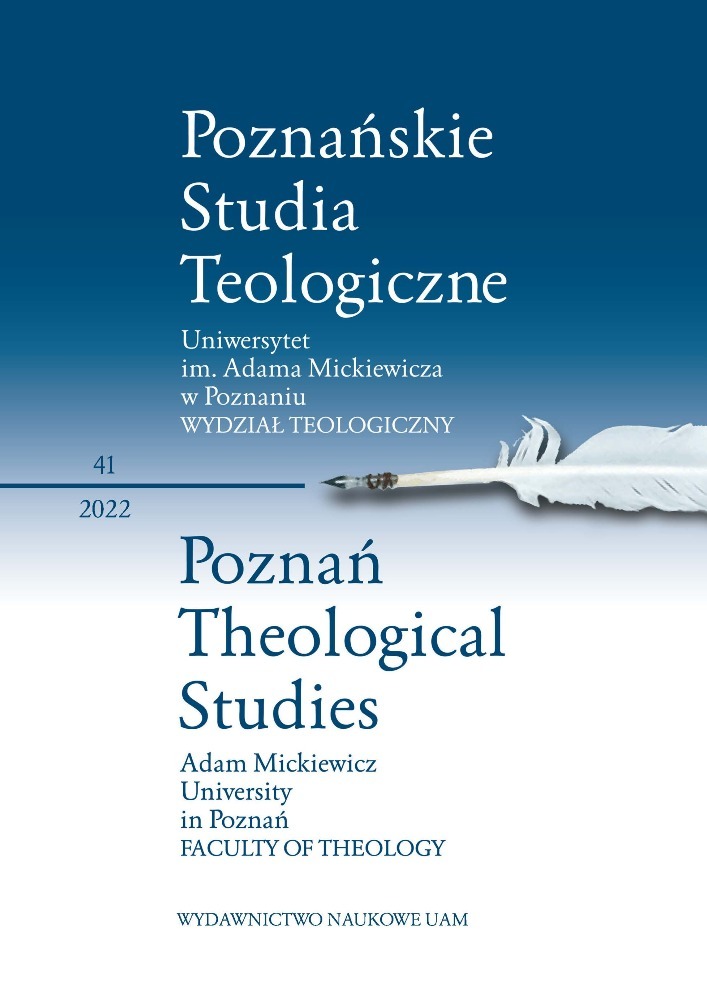Abstrakt
John Sinaites devoted the last part of his treatise The Ladder of Divine Ascent to the discussion of a breakthrough moment in asceticism, which opens the way into a mystical relationship with God. What is indinspensable to achieve it are the four gifts that a monk receives from God: hesychia, prayer, dispassion (apatheia) and love. Although each of them is vital in the process of unification, in Climacus’s opinion the most important of them is hesychia, understood as a gateway to union with God, a bridge between the intertwining spheres of asceticism and mysticism.
Bibliografia
Pismo Święte Starego i Nowego Testamentu, Biblia Tysiąclecia, Poznań 2015.
Johannes Climacus, Scala paradisi (PG 88, 631–1163); tłum. polskie: Św. Jan Klimak, Drabina raju, tłum. W. Polanowski, Kęty 2016.
Clemens Alexandrinus, Stromata (PG 8, 685–1382); tłum. polskie: Klemens Aleksandryjski, Kobierce zapisków filozoficznych dotyczących prawdziwej wiedzy, t. 1, tłum. J. Niemirska-Pliszczyńska, Warszawa 1994.
Evagrius Ponticus, Practicus, Sources Chrétiennes 170–171, Paris 1971; tłum. polskie: Ewagriusz z Pontu, O praktyce [ascetycznej], tłum. E. Kędziorek, w: Pisma ascetyczne, t. 1, ŹrMon 18, red. M. Starowieyski, s. 225–255.
Johannes Climacus, Liber ad pastorem (PG 88, 1165–1208); tłum. polskie: Św. Jan Klimak, Do Pasterza, tłum. W. Polanowski, Kęty 2016.
Vita Sancti Dosithei (PG 88, 122–144); tłum. polskie: Doroteusz z Gazy, Pisma ascetyczne, tłum. M. Borkowska, ŹrMon 51, red. M. Starowieyski, Kraków 2010.
Ἡσυχία, w: A Patristic Greek Lexicon, ed. G.W.H. Lampe, Oxford 2001, s. 609.
Chryssavgis J., John Climacus. From the Egyptian Desert to the Sinaite Mountain, Aldershot 2004.
Jasiewicz A., Rola ciała w walce duchowej w Drabinie raju świętego Jana Klimaka, „Seminare. Poszukiwania naukowe” 35 (2014), s. 23–33.
Jasiewicz A., Wstęp, w: Św. Jan Klimak, Drabina raju, tłum. W. Polanowski, Kęty 2016, s. 19–86. https://doi.org/10.21852/sem.2014.4.02 DOI: https://doi.org/10.21852/sem.2014.4.02
Kozera M., Ideały Ojców pustyni. Pathos i apatheia, Lublin 2000.
Leloup J.-Y., Hezychazm. Zapomniana tradycja modlitewna, tłum. H. Sobieraj, Kraków 1996.
Louth A., Początki mistyki chrześcijańskiej: (od Platona do Pseudo-Dionizego Areopagity), tłum. H. Bednarek, Kraków 1997.
Meyendorff J., Teologia bizantyjska. Historia i doktryna, tłum. J. Prokopiuk, Kraków 2007.
Naumowicz J., Filokalia. Teksty o modlitwie serca, Kraków 2012.
Nieścior L., Głos Klemensa Aleksandryjskiego i Ewagriusza z Pontu w starożytnej dyskusji o apathei, w: Ojcowie Kościoła wobec filozofii i kultury antycznej: zagadnienia wybrane, red. F. Drączkowski, J. Pałucki, M. Szram, Lublin 1998, s. 41–69.
Tofiluk J., Hezychazm i jego wpływ na rozwój duchowości, „Elpis” 4 (2002), nr 6, s. 97–106.
Ware K., Introduction, w: John Climacus, The Ladder of Divine Ascent, transl. C. Luibheid, N. Russell, (Classics of Western Spirituality), New York 1982, s. 1–70.
Wortley J., What hesychia Meant to the Desert Fathers, „Cistercian Studies Quarterly” 54 (2019), s. 159–170.
Zecher J.L., The Angelic Life in Desert and Ladder: John Climacus’s Re-Formulation of Ascetic Spirituality, „Journal of Early Christian Studies” 21 (2013), s. 111–136. https://doi.org/10.1353/earl.2013.0006 DOI: https://doi.org/10.1353/earl.2013.0006
Licencja
Prawa autorskie (c) 2022 Marcin Wójtowicz

Utwór dostępny jest na licencji Creative Commons Uznanie autorstwa – Użycie niekomercyjne – Bez utworów zależnych 4.0 Międzynarodowe.

